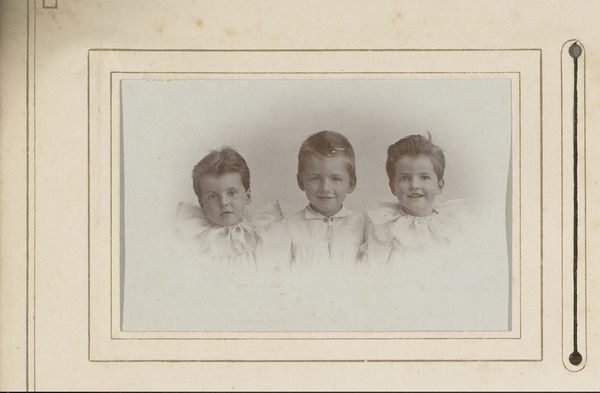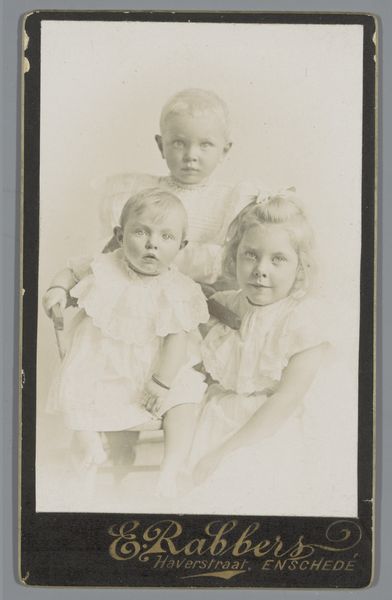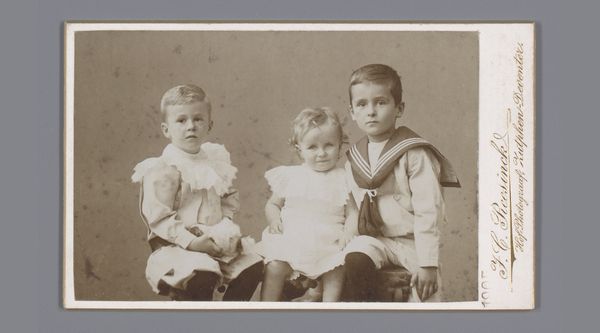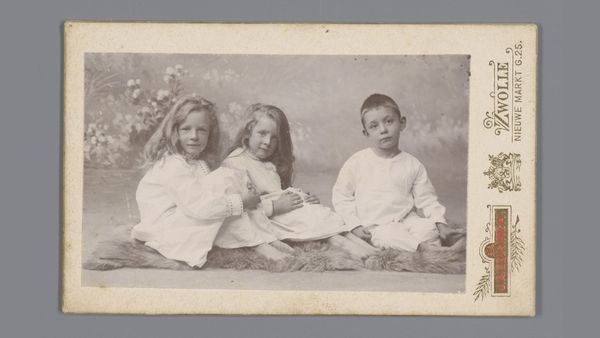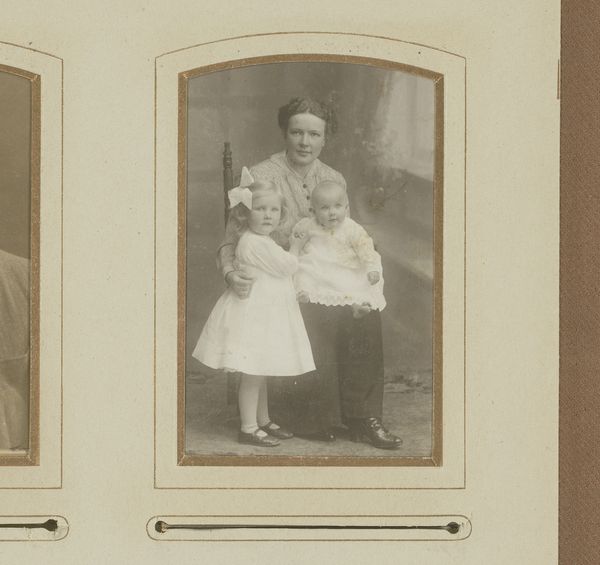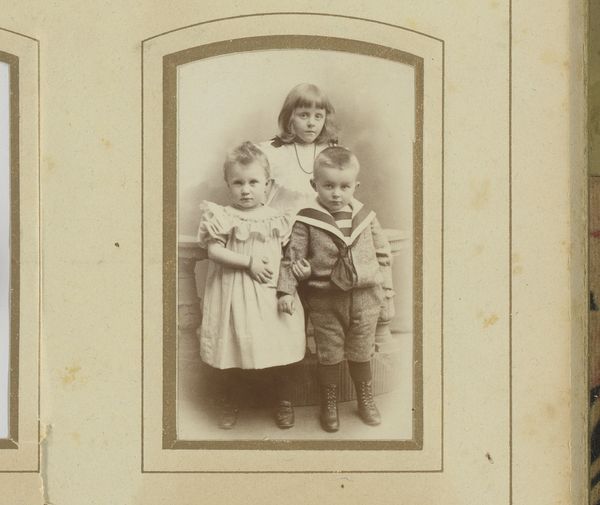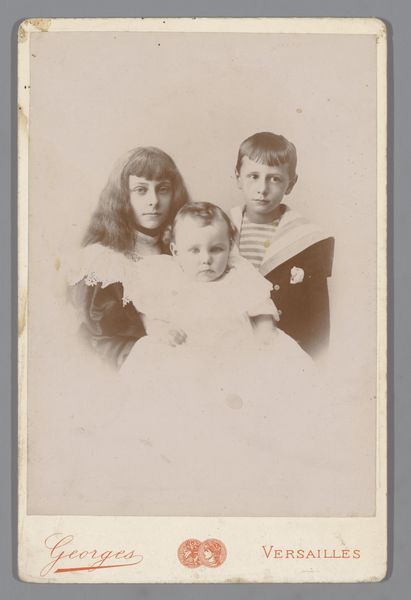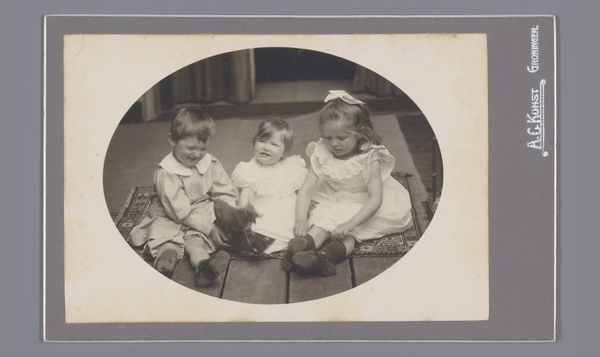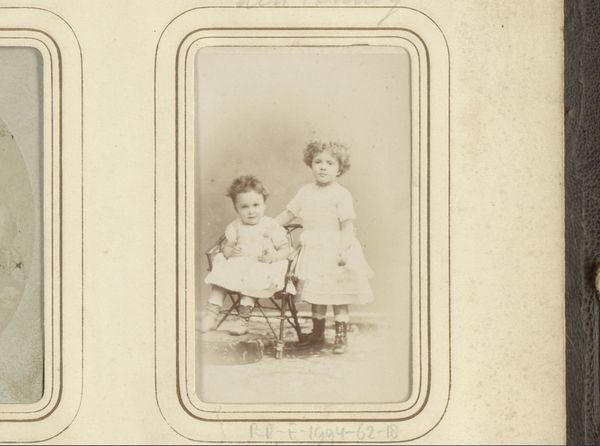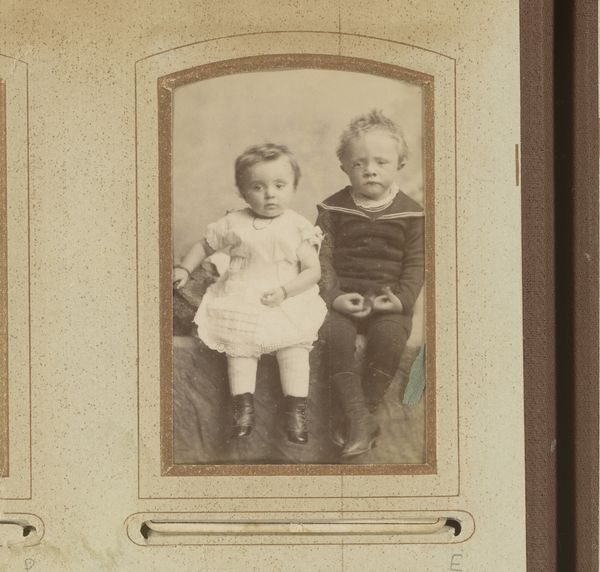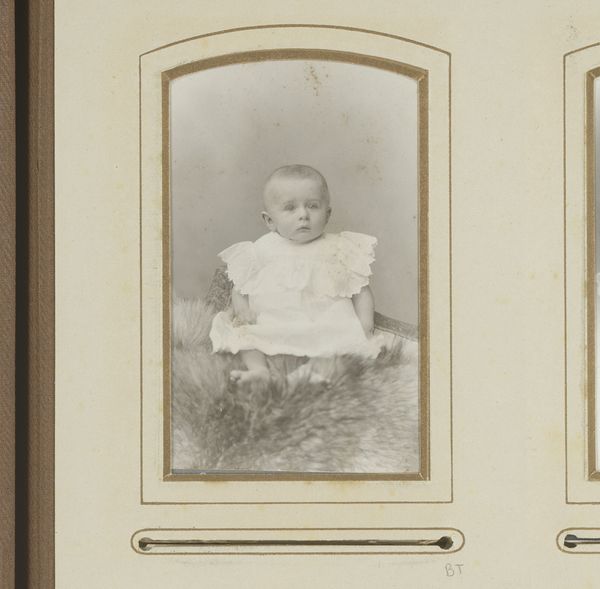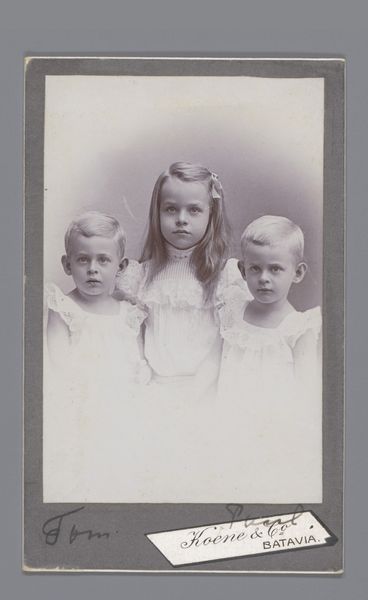
photography
#
portrait
#
pictorialism
#
photography
#
group-portraits
#
genre-painting
Dimensions: height 83 mm, width 52 mm
Copyright: Rijks Museum: Open Domain
Curator: So, let's talk about this intriguing image. What are your first impressions? Editor: I feel an almost Victorian hush emanating from the surface, yet the sharpness of the faces lends an almost eerie feel, like tiny ghosts trapped in a silver gelatin cloud. Curator: This photograph is a vintage print dating back to the period 1904-1911 and is titled "Groepsportret met drie meisjes", that roughly translates as a group portrait with three girls. This work showcases the skills of the photography firm Strüppert and van Duyl, a company known for pictorialism, which we know, moved away from merely documenting reality and created images with soft focus effects to suggest a crafted painting or drawing instead. Editor: The little lace collars, the carefully placed bow, the matching white frocks; all of them suggest an economic context where a great deal of thought, not to mention resources, were devoted to presenting an elevated bourgeois idea of childhood. Don't you think? Curator: I find that entirely plausible. Consider too the technology involved; mass production and the dissemination of photographic images like these was relatively new and provided many firms opportunities. These group portraits became highly profitable commercial enterprises for studios catering to a middle-class eager to demonstrate their values through genre-scenes like these. Editor: Yet there’s still this nagging question: what about these three individuals, removed from the social function, from economic relations of that historical instant. Do you think this specific photo stands on its own beyond that? The somewhat faded aspect confers an iconic quality that goes beyond historical context. Curator: I would agree, despite my desire to view these objects of culture as solely constructed. It is interesting how the specificities of that image allow it to exceed these parameters, allowing the photograph to still move us even after all this time. Editor: The power of art history, I guess, resides in how we constantly reshape each other's visions. Curator: I wouldn’t disagree with you, but it's a productive tension and, thankfully, one that resists a simple, straightforward explanation.
Comments
No comments
Be the first to comment and join the conversation on the ultimate creative platform.
